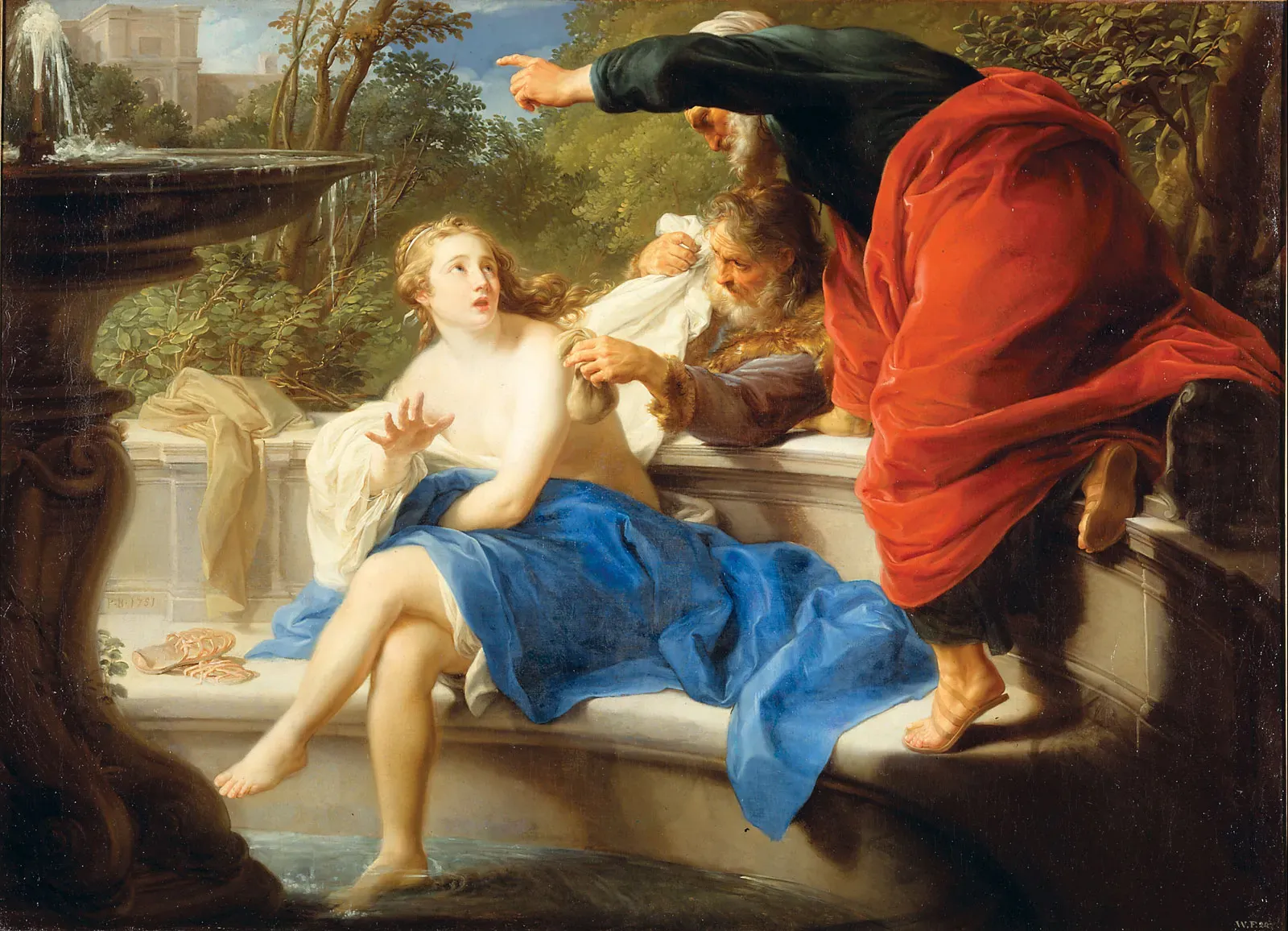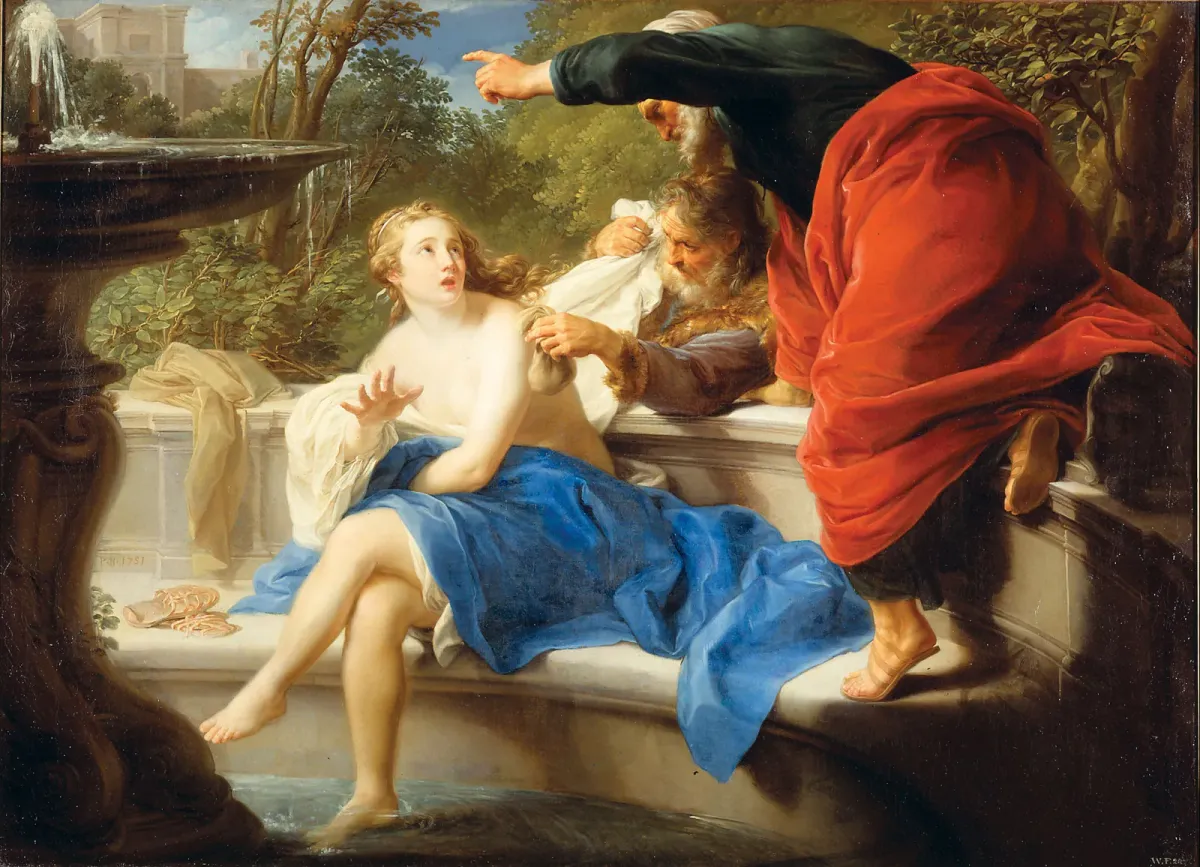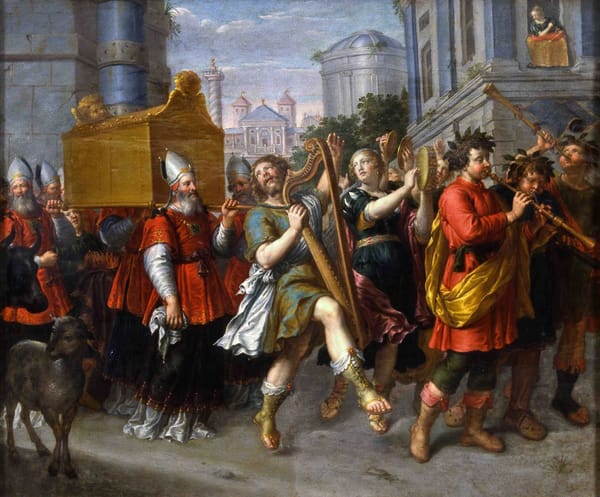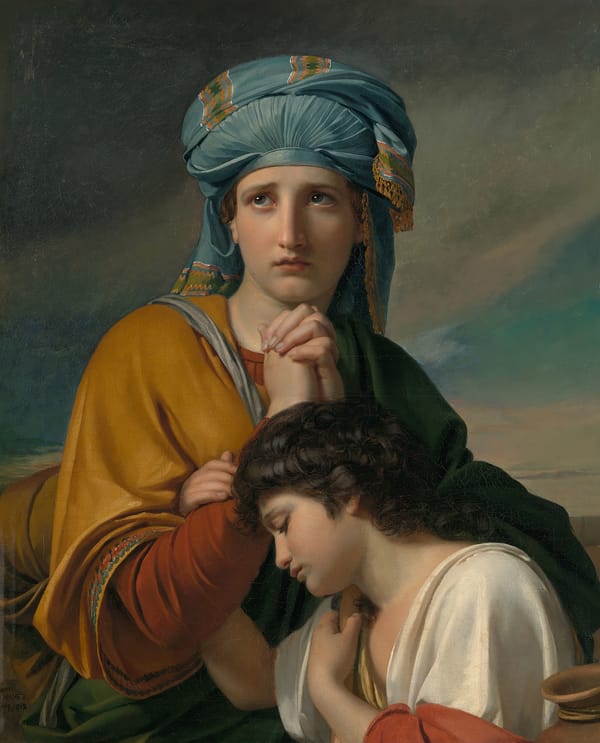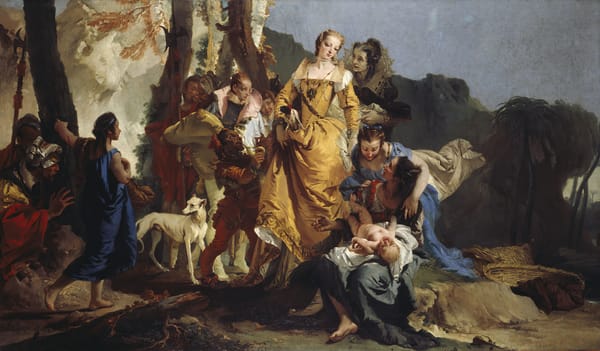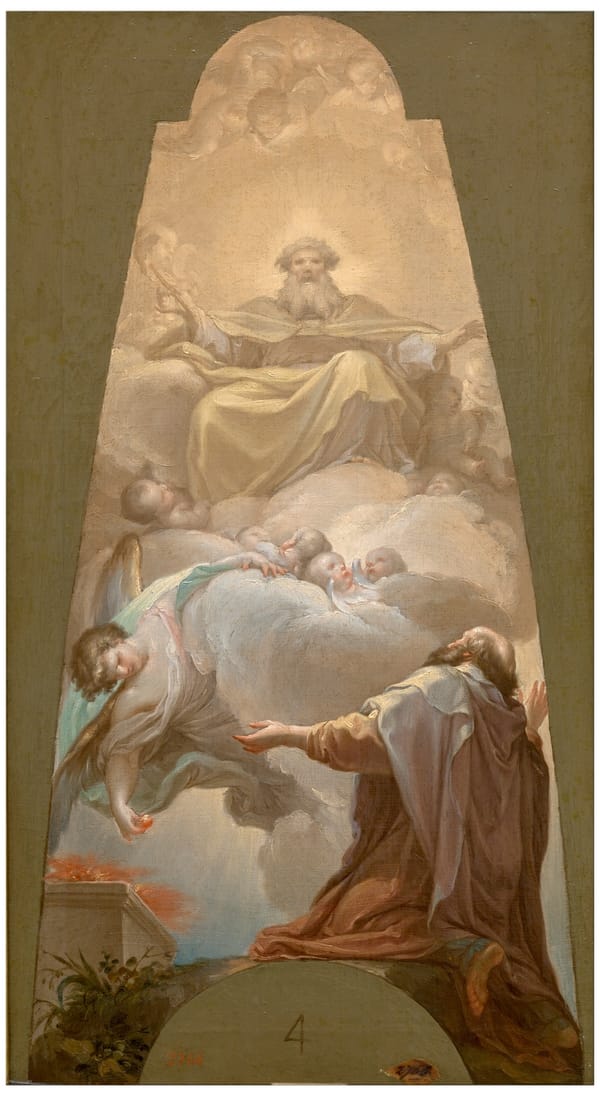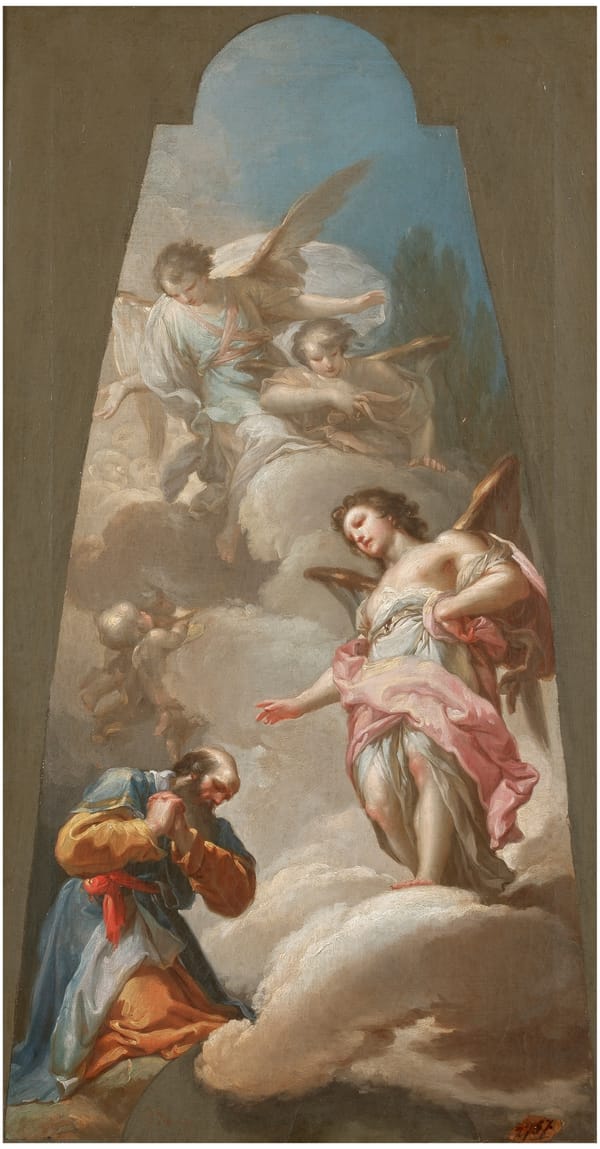About the Image:
Susanna and the Elders is a painting by Pompeo Batoni, created in 1751 in Rococo style[3]. The painting depicts the biblical story of Susanna, who was spied on by two elders while bathing and falsely accused of adultery[1]. The painting is considered a testament to Batoni's considerable stature as a painter, as he was the dominant painter in Rome in the middle years of the 18th century[1][2]. The painting was originally painted for Ernst Guido, Graf von Harrach[2]. The painting measures 136×99 cm and is displayed in various galleries, including the Web Gallery of Art, Arthive, and TopofART[1][4][6].
Citations:
[1] https://www.wga.hu/html_m/b/batoni/susanna.html
[2] https://www.sothebys.com/en/auctions/ecatalogue/2013/old-master-paintings-n08952/lot.73.html
[3] https://www.wikiart.org/en/pompeo-batoni/susanna-and-the-elders-1751
[4] https://arthive.com/artists/134~Pompeo_Girolamo_Batoni/works/358164~Susanna_and_the_elders
[5] https://artvee.com/dl/susanna-and-the-elders-5/
[6] https://www.topofart.com/artists/Batoni/art-reproduction/8624/Susanna-and-the-Elders.php
About the Artist:
Pompeo Girolamo Batoni (1708-1787) was an Italian painter who was the leading portrait painter of 18th-century Rome[3]. He was born in Lucca, Italy, the son of a goldsmith, and his training probably took place there[3]. Batoni's style took inspiration and incorporated elements of classical antiquity, French Rococo, Bolognese classicism, and the work of artists such as Nicolas Poussin, Claude Lorrain, and especially Raphael[1]. He is considered a precursor of Neoclassicism[1]. Batoni invented the type of "grand tourist" portrait, which shows the sitter at ease among the ruins of antiquity, and was very popular among the English[4]. Batoni's pre-eminence in this field was unchallenged, and he was particularly favored by foreign visitors making the Grand Tour, whom he often portrayed in an antique setting[2]. Batoni's works are displayed in various galleries, including the National Gallery in London and the National Galleries of Scotland[3][6].
Citations:
[1] https://en.wikipedia.org/wiki/Pompeo_Batoni
[2] https://artuk.org/discover/artists/batoni-pompeo-17081787
[3] https://www.nationalgallery.org.uk/artists/pompeo-girolamo-batoni
[4] https://www.britannica.com/biography/Pompeo-Girolamo-Batoni
[5] https://www.wikiart.org/en/pompeo-batoni
[6] https://www.nationalgalleries.org/art-and-artists/artists/pompeo-girolamo-batoni
